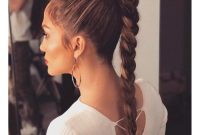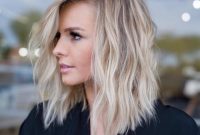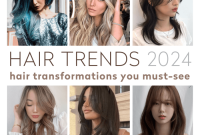In the realm of hairstyles, fringe bangs stand as a timeless and versatile element, capable of transforming one’s appearance with a single, bold stroke. From the iconic blunt bangs of Audrey Hepburn to the effortless side-swept fringe of Alexa Chung, these face-framing strands have captivated hearts and inspired trends for decades.
In this comprehensive guide, we delve into the art of achieving the perfect fringe bangs, exploring everything from choosing the most flattering style to mastering the techniques for cutting and styling. Whether you’re seeking a dramatic change or a subtle enhancement, this guide will empower you to embrace the transformative power of fringe bangs.
Defining Fringe Bangs
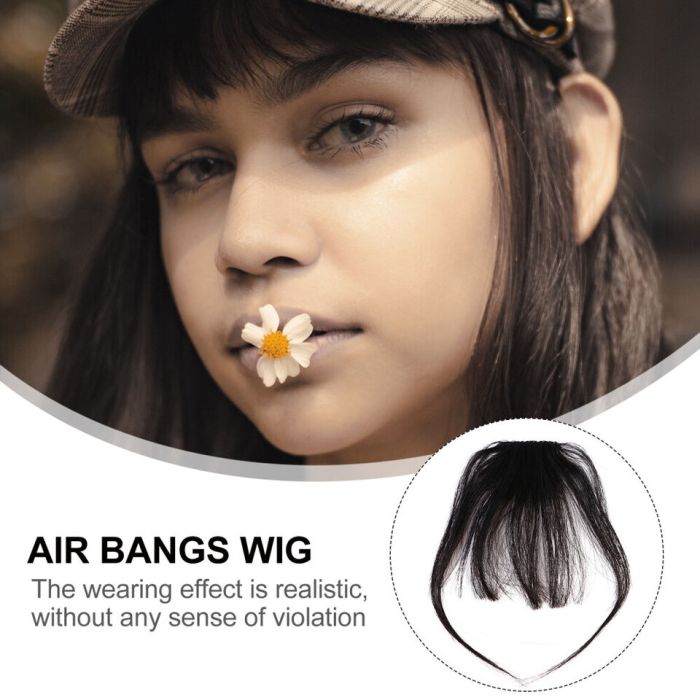
Fringe bangs, also known as a fringe or simply bangs, are a type of haircut that involves cutting the hair across the forehead. They can vary in length, shape, and placement, creating a variety of stylish looks. Common fringe bang styles include blunt bangs, side-swept bangs, and curtain bangs.
Benefits of Fringe Bangs
Fringe bangs offer several benefits, including:
- Framing the Face: Fringe bangs can help to frame and emphasize the eyes, cheekbones, and jawline, creating a more balanced and harmonious appearance.
- Adding Texture: Fringe bangs can add texture and movement to hair, especially for those with fine or flat hair.
- Hiding Imperfections: Fringe bangs can help to conceal forehead wrinkles, acne scars, or other facial imperfections.
- Versatility: Fringe bangs can be styled in a variety of ways, from sleek and straight to messy and textured, making them suitable for different occasions and personal styles.
Choosing the Right Fringe Bangs
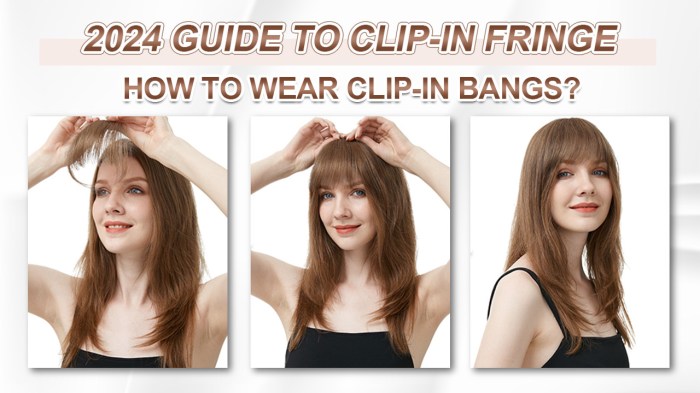
Selecting the perfect fringe bangs requires careful consideration of various factors, including face shape, hair type, and personal lifestyle. Matching the fringe style to your face shape can enhance your features and create a harmonious overall look.
Face Shape
For oval face shapes, consider soft, side-swept bangs that gently frame the face, creating a balanced and flattering look. Round face shapes may benefit from longer, wispy bangs that help elongate the face. Heart-shaped faces can opt for blunt, full bangs that draw attention to the eyes and balance out a wider forehead.
Square face shapes can soften their angles with choppy, textured bangs that add movement and dimension.
Hair Type
If you have thick, straight hair, blunt or heavy bangs can create a bold and striking look. For fine or thin hair, opt for wispy, layered bangs that add volume and texture without weighing the hair down. Curly or wavy hair can be styled with soft, side-swept bangs that blend seamlessly with the natural texture of the hair.
Lifestyle
Consider your lifestyle and daily routine when choosing fringe bangs. If you’re short on time or prefer low-maintenance hairstyles, consider bangs that are easy to style and maintain. If you enjoy experimenting with different hairstyles, opt for bangs that can be styled in various ways, from sleek and straight to tousled and textured.
Cutting Fringe Bangs
Cutting fringe bangs at home requires careful preparation, precise measuring, and steady hands. By following the steps Artikeld below, you can achieve a stylish and flattering fringe that complements your face shape and hair texture.
Gather Necessary Tools
Before you begin, gather the following tools:
- A sharp pair of hairdressing scissors
- A fine-tooth comb
- A hair clip or bobby pin
- A towel
- A mirror
Prepare Hair
Wash and dry your hair thoroughly. Comb it to remove any tangles and knots. If your hair is thick or curly, you may want to blow it out straight for a more precise cut.
Section Hair
Use the comb to create a triangular section of hair at the front of your head. The base of the triangle should be at the center of your forehead, and the sides should extend to the outer corners of your eyebrows.
Clip or pin the rest of your hair away from the section you are cutting.
Measure and Mark Desired Fringe Length
Decide how long you want your bangs to be. For a classic fringe, aim for a length that falls just below your eyebrows. For a more dramatic look, you can cut them shorter. Use the comb to measure and mark the desired length on the hair section.
Cut the Bangs
Hold the hair section taut between your fingers, with the marked length facing away from you. Use the scissors to cut the hair straight across, following the marked line. Be careful not to cut too much hair at once. Start with a small trim and gradually cut more if needed.
Safety Precautions and Tips
Always use sharp scissors to ensure a clean cut. Dull scissors can crush the hair ends, leading to split ends and damage. Cut slowly and carefully, taking your time to achieve a precise and even cut. If you are unsure about the length or shape, it is better to cut less hair initially and trim it further if needed.
Styling Fringe Bangs
Fringe bangs are a versatile and stylish way to frame your face and add personality to your look. With the right styling, you can create a variety of looks with fringe bangs, from sleek and polished to messy and textured.
Here are some tips for styling fringe bangs:
Using a Round Brush and Blow Dryer
To create volume and shape in your fringe bangs, use a round brush and blow dryer. Start by applying a heat protectant spray to your bangs to protect them from damage. Then, use the round brush to lift your bangs up and away from your forehead as you blow dry them.
Be sure to direct the airflow downward, towards the ends of your bangs. This will help to create a smooth, polished look.
Styling Products
To hold your fringe bangs in place and prevent frizz, use a styling product such as hairspray or mousse. Apply a small amount of the product to your bangs, focusing on the ends. You can also use a shine serum to add a touch of gloss and definition to your bangs.
Creating Different Looks
You can create a variety of looks with fringe bangs, depending on your personal style. For a sleek and polished look, use a flat iron to straighten your bangs. For a messy and textured look, use a curling iron to create loose waves or curls in your bangs.
You can also use a hair clip or headband to hold your bangs back for a more casual look.
Maintaining Fringe Bangs
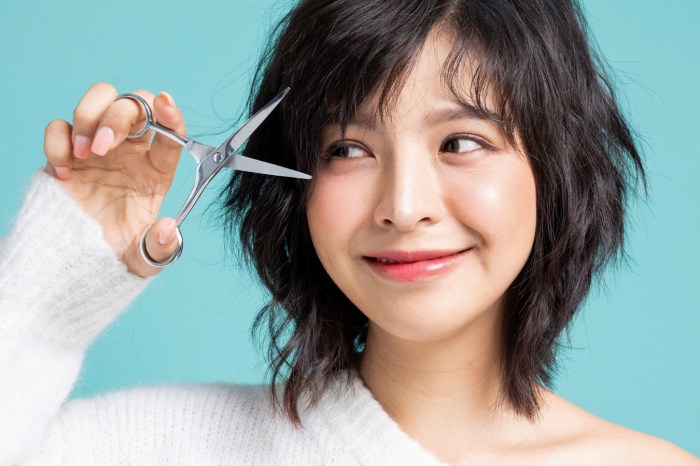
Regular maintenance is essential to keep fringe bangs looking their best. Trimming, washing, conditioning, and protecting fringe bangs from heat damage are key to maintaining healthy and stylish bangs.
Regular Trims
Regular trims are crucial for maintaining neat and healthy fringe bangs. Trimming removes split ends, prevents breakage, and keeps the bangs looking fresh. Aim for a trim every 4-6 weeks to maintain the desired length and shape of your fringe bangs.
Washing and Conditioning
Wash fringe bangs regularly with a gentle shampoo and conditioner. Use lukewarm water to avoid damaging the hair. Avoid harsh shampoos and conditioners that can strip away natural oils and cause dryness. Use a wide-toothed comb to detangle wet bangs gently, starting from the ends and working your way up.
Heat Protectant Products
Using heat protectant products before styling fringe bangs with hot tools is essential to prevent heat damage. Heat protectant sprays or serums create a barrier between the hair and the heat, reducing the risk of split ends and breakage. Apply the heat protectant product evenly to dry or damp fringe bangs before using a blow dryer, flat iron, or curling iron.
Common Problems and Solutions
Fringe bangs are prone to certain common problems, such as split ends and breakage. Split ends can be prevented by regular trims and using a leave-in conditioner to keep the hair hydrated. Breakage can be minimized by avoiding excessive heat styling and using a wide-toothed comb to detangle the bangs gently.
Fringe Bangs Inspiration
Fringe bangs are a versatile and stylish way to add personality to your look. Whether you’re looking for a dramatic change or a subtle update, there’s a fringe bang style that’s perfect for you. To help you find the right fringe, we’ve put together a gallery of images featuring celebrities and influencers with fringe bangs, as well as a table comparing the different types of fringe bangs and an infographic illustrating the steps involved in cutting and styling fringe bangs at home.
Celebrity and Influencer Gallery
Our gallery features a diverse range of celebrities and influencers with fringe bangs, showcasing different styles and lengths. From the blunt, straight bangs of Emma Watson to the choppy, textured bangs of Taylor Swift, there’s a fringe bang style for everyone.
Take some time to browse the gallery and find a few styles that you like. This will help you narrow down your options and find the perfect fringe bang style for you.
Types of Fringe Bangs
There are many different types of fringe bangs, each with its own unique characteristics and styling tips. The following table compares the most popular types of fringe bangs, including their characteristics, styling tips, and suitable face shapes:
| Type of Fringe Bangs | Characteristics | Styling Tips | Suitable Face Shapes |
|---|---|---|---|
| Blunt Bangs | Straight, thick bangs that are cut across the forehead | Use a flat iron to keep bangs straight and smooth. Add a little bit of hairspray to help them stay in place. | Oval, square, and diamond-shaped faces |
| Side-Swept Bangs | Bangs that are swept to one side of the forehead | Use a round brush and blow dryer to style bangs. Add a little bit of hairspray to help them stay in place. | All face shapes |
| Choppy Bangs | Bangs that are cut into short, uneven layers | Use a texturizing spray to add texture and definition to bangs. Scrunch them up with your fingers to create a messy, undone look. | Oval, square, and heart-shaped faces |
| Arched Bangs | Bangs that are cut into a curved shape | Use a round brush and blow dryer to style bangs. Add a little bit of hairspray to help them stay in place. | Oval, square, and diamond-shaped faces |
| Feather Bangs | Bangs that are cut into long, wispy layers | Use a curling iron to add soft waves to bangs. Add a little bit of hairspray to help them stay in place. | All face shapes |
Infographic: Cutting and Styling Fringe Bangs at Home
If you’re feeling brave, you can cut and style your own fringe bangs at home. Follow the steps in the infographic below to get the perfect fringe bangs:

With a little bit of practice, you’ll be able to cut and style your own fringe bangs like a pro.
Last Recap
With the knowledge and inspiration gained from this guide, you’re now equipped to embark on your journey to achieving the perfect fringe bangs. Remember, the key lies in understanding your unique features and choosing a style that complements your face shape, hair type, and lifestyle.
Experiment with different styling techniques and products to find the look that resonates with your personality and style. Embrace the transformative power of fringe bangs and let them become a statement of your individuality and confidence.
FAQ Summary
Q: What are some common mistakes to avoid when cutting fringe bangs at home?
A: Common mistakes include cutting the bangs too short, not sectioning the hair properly, and using dull or unsuitable scissors. It’s always advisable to seek professional guidance if you’re unsure about the process.
Q: How often should I trim my fringe bangs to maintain their shape and health?
A: Regular trims are essential to keep your fringe bangs looking neat and healthy. Aim for a trim every 4-6 weeks, or more frequently if you have fast-growing hair or notice split ends.
Q: What are some styling tips for achieving a sleek and polished look with fringe bangs?
A: To achieve a sleek and polished look, blow-dry your fringe bangs using a round brush to create volume and shape. Use a small amount of hairspray or gel to hold the bangs in place and prevent frizz.
Q: How can I prevent my fringe bangs from becoming oily or greasy?
A: To prevent oiliness, wash your fringe bangs regularly with a clarifying shampoo. Avoid touching your bangs too often, as this can transfer oil from your fingers to your hair.
Q: What are some creative ways to style fringe bangs for special occasions?
A: For special occasions, you can try styling your fringe bangs with braids, twists, or updos. You can also add accessories like headbands, clips, or flowers to elevate the look.

